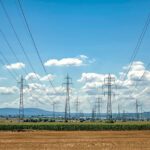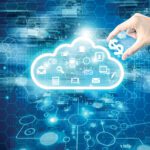Climate change is continuing to drive temperatures to unprecedented levels. In just a single day in late June, the United States set or broke at least 21 high-temperature records.
So, what do we do to cool down? We crank up the air conditioner. But with each surge in energy demand, our aging grid is being pushed to the brink—and sometimes, it simply can’t keep up.
COMMENTARY
According to Reuters’ analysis of North American Electric Reliability Corporation (NERC) data, on average, 9,656 outages occurred annually between 2015 and 2020. That is more than double the average during the previous six-year period. Unfortunately, all signs indicate that we can expect more of the same throughout 2022 and beyond. NERC’s 2022 Summer Reliability Assessment found that power outages are likely in parts of the Midwest, California and Texas this summer.
The status quo is not sustainable, and it’s putting people—especially our most vulnerable—at risk. While initiatives such as carbon-neutral goals are essential to preparing for tomorrow, utilities must act now to keep up with today’s reality: summers that keep getting hotter.
Ensuring Supply Can Keep Up With Demand
Providing utilities and consumers greater insight and control over energy consumption is a critical component of a modern grid. It helps the grid contend with increased energy demand during the summer months and addresses challenges that arise from changing behavior and demand, onset by electric vehicle (EV) adoption and distributed energy resources (DERs) integration.
This is where distributed intelligence (DI) comes into play.
A DI platform combines smart endpoints (meters, devices and other sensors) with peer-to-peer connectivity. Applications can then be downloaded to devices in the field to solve existing and new challenges. Key benefits from this approach include grid optimization, asset management, integration of DERs, and consumer engagement—all critical to ensuring supply can keep up with demand.
Engaging the End User to Reduce Peak Energy Demand
DI technology provides several opportunities when it comes to encouraging end users to make educated decisions about their energy usage. One of the simplest ways is giving consumers access to their consumption data in real time through their meter over Wi-fi. They can then change their daily habits on their own to reduce costs and the chance of an unwanted surprise on their next bill.
A demand response (DR) program takes this one step further. A DR program is a fairly straightforward concept—during a period of high demand, end users reduce their usage and are rewarded with an incentive payment or another form of financial compensation. This is on top of savings realized from using less energy during peak price periods.
While it’s a simple concept, not all DR programs look the same. Direct load control programs, for example, allow utility companies to automatically turn off appliances such as air conditioning for a short time when demand skyrockets. This opt-in program works without the need for manual intervention by the customer.
Other programs require the consumer to take action. Time-of-use (TOU)/peak alerts proactively share real-time data with a consumer. These insights—including approximate savings that could be achieved if the use of the appliances were curtailed during the peak price period—can help consumers make educated decisions about their energy usage when pricing signals are sent.
Checking All the Boxes to Ensure Success
A successful DR program must be strategically designed from start to finish. Everything from technology implementations (smart meters, analytics solutions, etc.) must be in place, while billing, compensation and regulatory considerations must be accounted for. Additionally, utility companies must ensure customer engagement efforts are ramped up, from basic energy education to community awareness campaigns and competitions.
There are a lot of moving parts that must be considered when it comes to a DR program. However, when done right, these programs put intelligence gathered from the edge of the grid to good use. It helps utilities manage the equilibrium and cost of energy systems and ensures the continued reliability of electric generation and distribution. It’s the responsibility of utilities to ensure the lights stay on, but customers now also play an essential part in preventing dangerous blackouts and brownouts. The good news is that customers are willing to help—they just need to know how.
—Mike Ting is senior product manager at Itron.










